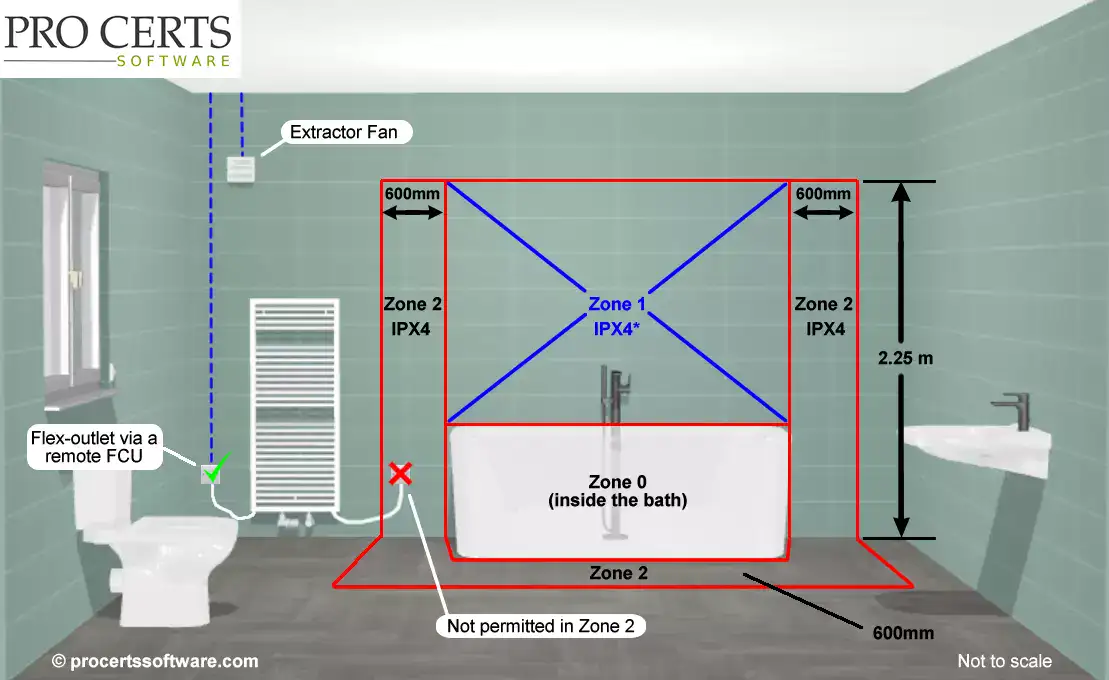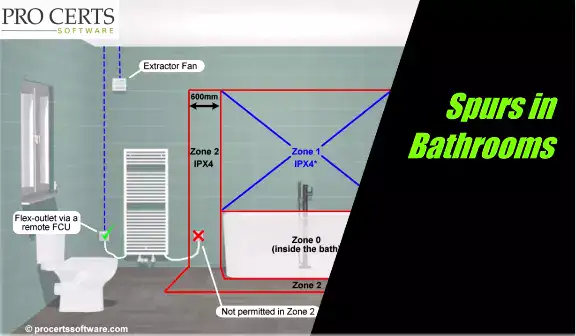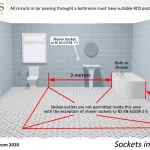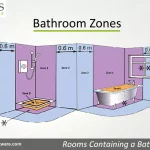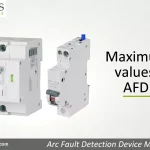Can I install a switched fused spur in a bathroom?
Yes and No. Although this question is clearly covered in BS 7671 IET Wiring Regulations and Guidance Note 7 Special Locations it’s still a common question that comes up time and time again, so we hope to clear up any misunderstandings on the position and locations of electrical points, switches, spurs and any other electrical equipment in bathrooms in this post.
For the purpose of this post when we refer to a bathroom this also includes shower rooms.
Bathroom Zones
In relation to electrical safety, in the UK, bathrooms are divided in to 3 Zones, Zone 0, Zone 1 and Zone 2, there also used to be Zone 3 which has since been removed from BS 7671.
Within each bathroom zone there are specific conditions relating to the siting of and installation of electrical current using equipment, switches, control gear and lighting and the suitability / minimum requirements of that electrical equipment within a particular zone.
Bathroom zones are also applicable to other rooms which contain a bath or shower for example, a shower cubical in the corner of a bedroom.
Extra consideration should be also be taken on the suitability of any electrical equipment or accessories even if it is installed outside of a zone but still within a bathroom.
In addition to the bathroom zone requirements BS 7671 also comments that any piece of electrical equipment or accessories such as sockets, switches or fused spurs must be suitable for it’s intended location taking into consideration of external influences and the surrounding environment.
For further detailed information see Bathroom Zones.
Bathroom IP Ratings
- Zone 0: IPX7 (note 1)
- Zone 1: IPX4 (note 1)
- Zone 2: IPX4 (note 1)
Note 1, The general requirements of Parts 1 to 6 of the regulations are applicable within the zones of a room containing a bath or shower but are also supplemented by the additional requirements set out in part 701 of BS 7671.
For further information see IP Ratings of Electrical Equipment in Bathrooms

